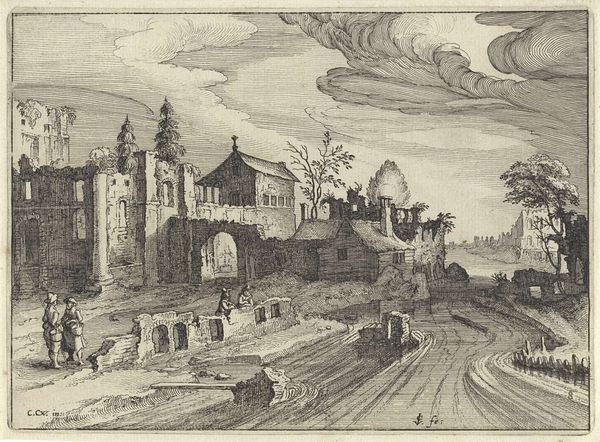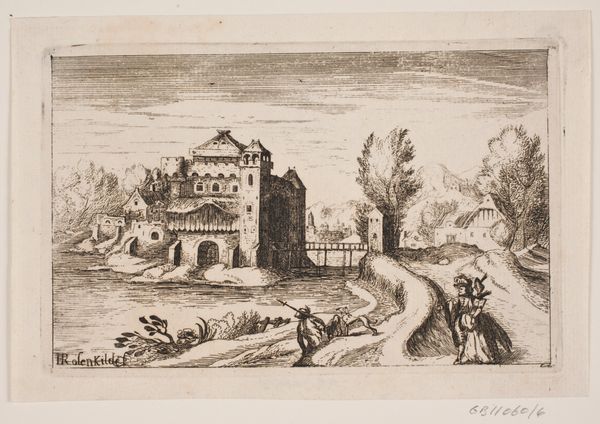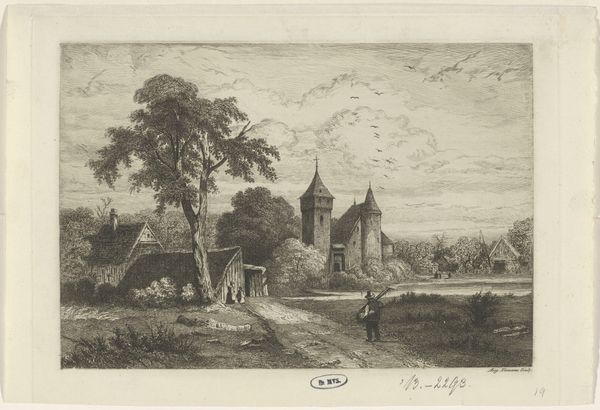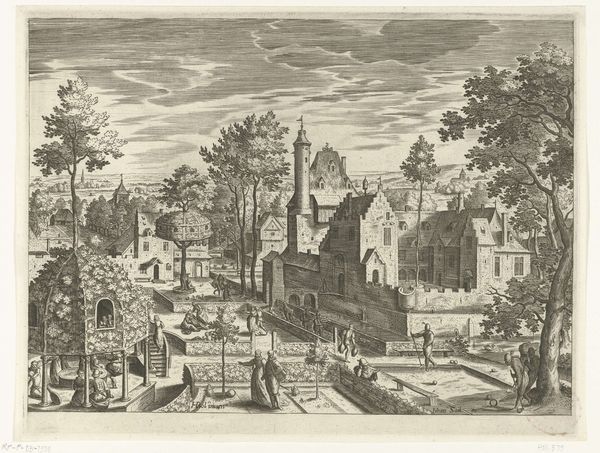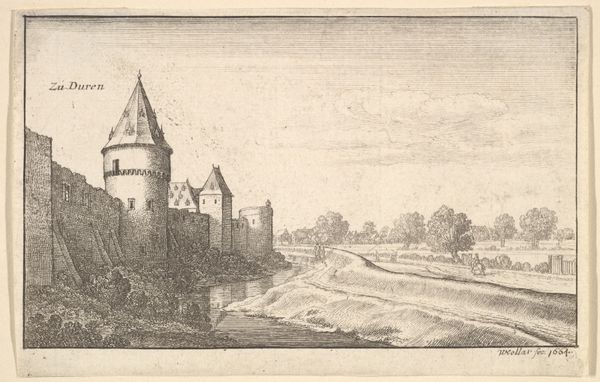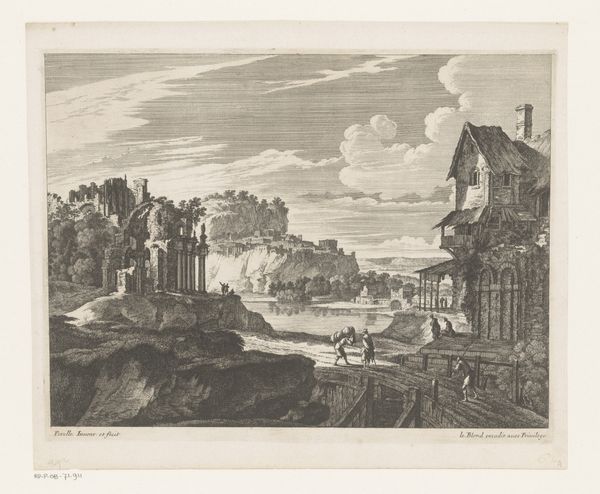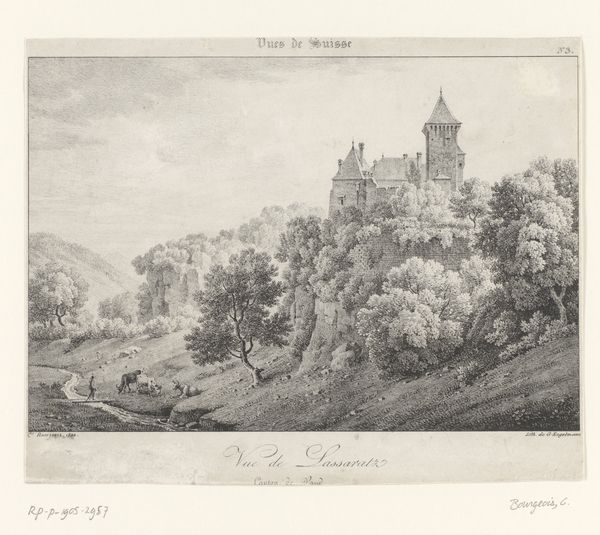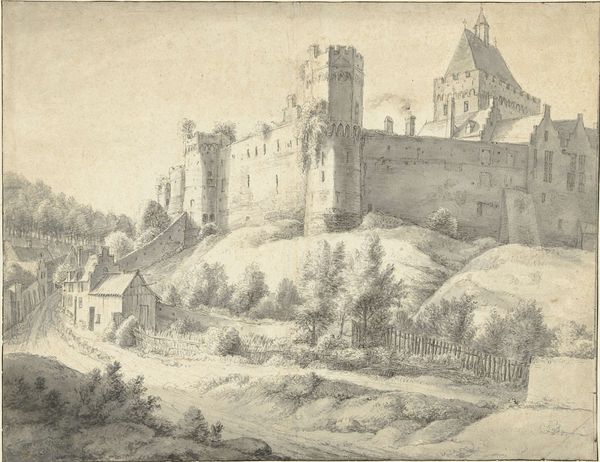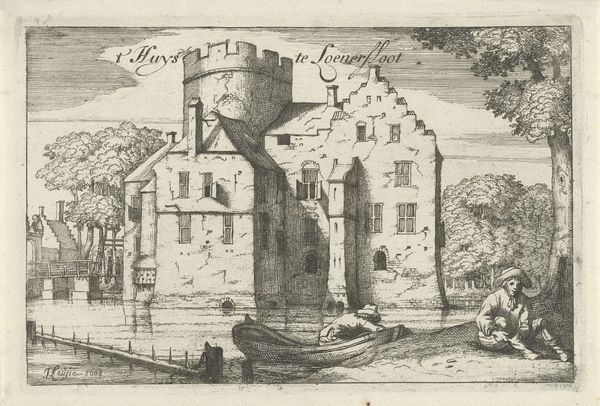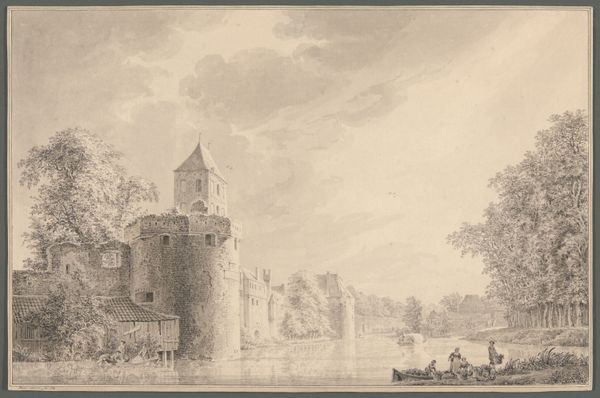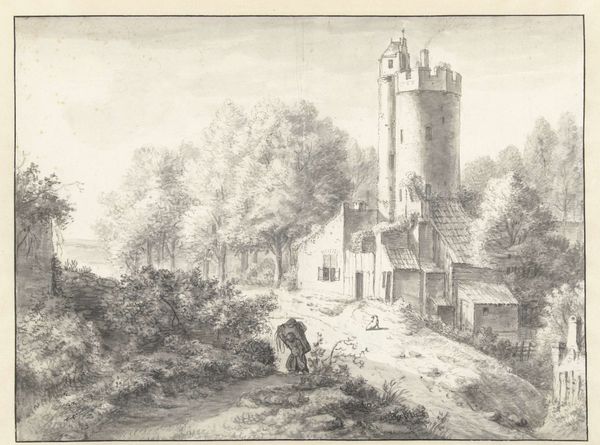
drawing, print, etching
#
drawing
# print
#
etching
#
landscape
#
romanticism
#
cityscape
Dimensions: Sheet: 20 7/8 × 13 7/8 in. (53 × 35.3 cm) Image: 14 3/8 × 9 15/16 in. (36.5 × 25.3 cm)
Copyright: Public Domain
Editor: So, here we have Eugène Isabey’s “Pesteil Castle in Polminhac,” an etching from 1832. The detail is incredible for a print! There's a real sense of depth, like you could walk right into the scene. What historical context would you bring to an interpretation of this work? Curator: This piece reflects a crucial shift in the perception of landscape. By 1832, Romanticism's emphasis on nature and emotion had thoroughly seeped into art and culture, but consider where it intersects with political sentiment at the time. Editor: In what ways? Curator: Well, consider what "landscape" signified to different social classes. The image of a rural landscape was increasingly packaged and consumed as representative of a 'national' identity. The feudal structures depicted become aesthetic objects. Who then benefits from its circulation? Does this idealized vision gloss over other truths? Editor: It's interesting that you bring up this point of accessibility to landscape as a product of socio-political tension of the moment, especially considering the picturesque is tied with idealized nationhood. How does that connect with Isabey’s composition? Curator: Note the prominent position of the castle against that sky. Its dominance isn’t merely architectural; it subtly asserts historical power, a feudal remnant romanticized in a changing social order. Yet, look closely. Where are the people of consequence? Who does the print allow us to observe or disregard? Editor: I see your point. While appearing serene, it really engages with questions about power and representation in a period of transition, I guess. I initially overlooked it entirely but Isabey captured a particular narrative about land, power, and national identity during that period of French history! Curator: Precisely. Considering the artist and potential audience in the print market invites one to critically interrogate romantic landscape further than scenic and into its production as cultural and, perhaps, even ideological artifacts.
Comments
No comments
Be the first to comment and join the conversation on the ultimate creative platform.
